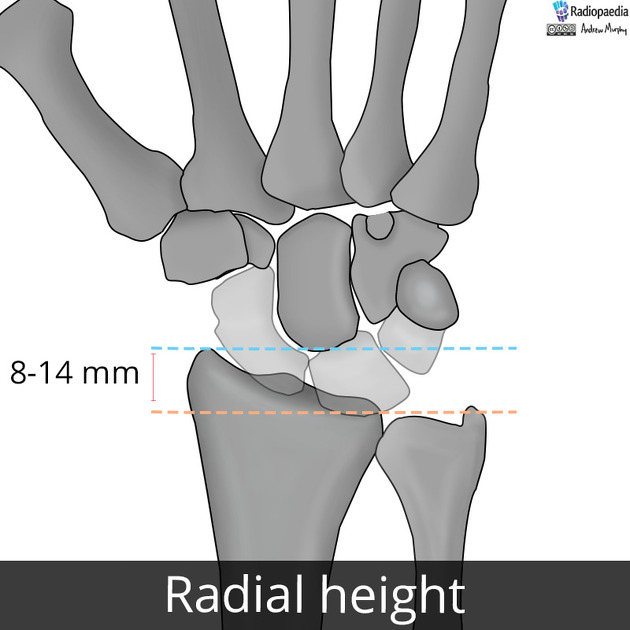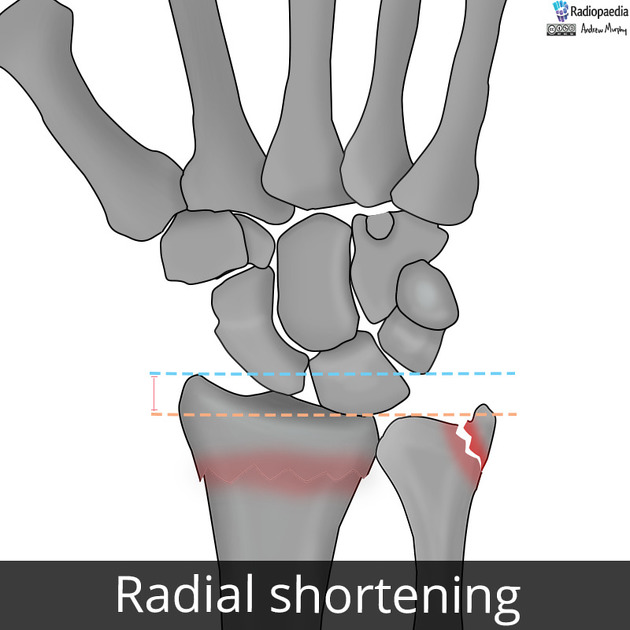Radial height
Citation, DOI, disclosures and article data
At the time the article was created Andrew Murphy had no recorded disclosures.
View Andrew Murphy's current disclosuresAt the time the article was last revised Andrew Murphy had no recorded disclosures.
View Andrew Murphy's current disclosuresRadial height (also known as radial length) is the distance between two lines drawn perpendicular to the long axis of the radius on the AP projection from the apex of the radial styloid and level of the ulnar aspect of the articular surface.
Usage
A normal radial height is within the range 8–14 mm, the values range from publication to publication 1,2. However, it is widely agreed upon that a loss in radial height is an indicator of poor function. A loss in radial height, also known as radial shortening, is often the result of impacted fractures of the radius, and restoring it is the purpose of both reduction and surgical fixation.
References
- 1. Emily A. Lalone, Ruby Grewal, Graham J. W. King, Joy C. MacDermid. A Structured Review Addressing the Use of Radiographic Measures of Alignment and the Definition of Acceptability in Patients with Distal Radius Fractures:. (2015) HAND. 10 (4): 621-38. doi:10.1007/s11552-015-9772-9 - Pubmed
- 2. Dario P, Matteo G, Carolina C, Marco G, Cristina D, Daniele F, Andrea F. Is it really necessary to restore radial anatomic parameters after distal radius fractures?. (2014) Injury. 45 Suppl 6: S21-6. doi:10.1016/j.injury.2014.10.018 - Pubmed
- 3. Watson NJ, Asadollahi S, Parrish F, Ridgway J, Tran P, Keating JL. Reliability of radiographic measurements for acute distal radius fractures. (2016) BMC medical imaging. 16 (1): 44. doi:10.1186/s12880-016-0147-7 - Pubmed
Incoming Links
Related articles: Wrist pathology
- alignment
- wrist fractures and dislocations
- distal radial fracture
- pediatric
- carpal bones
- Mayfield classification of carpal instability
- carpal instability
- osteonecrosis
- triangular fibrocartilaginous complex (TFCC) injuries
- ulnar-sided wrist impaction and impingement syndromes
- soft tissue and tendons
- arthritides






 Unable to process the form. Check for errors and try again.
Unable to process the form. Check for errors and try again.